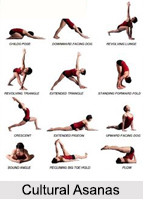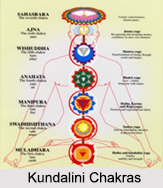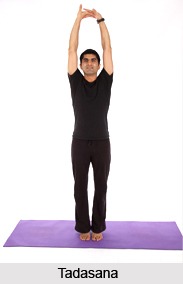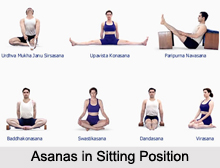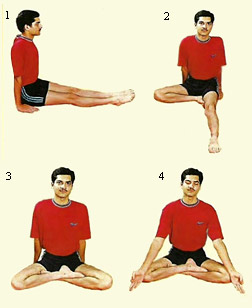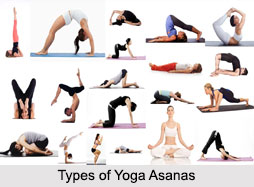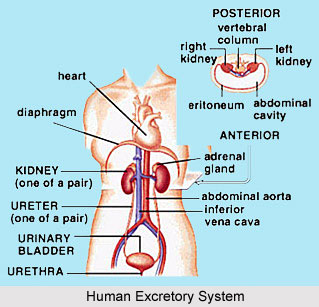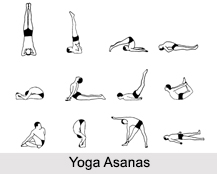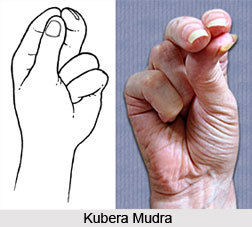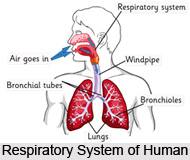 The practice of Yoga exhibits a powerful and profound effect on the respiratory system, perhaps more than any other system of the body. The greatest respiratory benefit may come from the regular practice of Pranayama, which works directly on the respiratory system; certain series of Asanas are also beneficial by exhibiting direct or indirect effects on the respiratory organs like lungs, diaphragm and other organs.
The practice of Yoga exhibits a powerful and profound effect on the respiratory system, perhaps more than any other system of the body. The greatest respiratory benefit may come from the regular practice of Pranayama, which works directly on the respiratory system; certain series of Asanas are also beneficial by exhibiting direct or indirect effects on the respiratory organs like lungs, diaphragm and other organs.
The human respiratory system`s function is to allow gas exchange. The space between the alveoli and the capillaries, the anatomy or structure of the exchange system, and the precise physiological uses of the exchanged gases vary depending on the organism. In humans and other mammals, for example, the anatomical features of the respiratory system include airways, lungs, and the respiratory muscles. Molecules of oxygen and carbon dioxide are exchanged passively, by diffusion, between the gaseous external environment and the blood. This exchange process occurs in the alveolar region of the lungs.
The two lungs, the right and the left, are held in an airtight cage called the chest. The sides of this cage comprise the flexible ribs and its bottom is made up of a very stout muscle called the diaphragm. The ribs are moved up and down by means of the intercostals. Because of the action of the diaphragm and the intercostals, the chest expands and contracts, several times in a minute. When the chest contracts the lungs inside are pressed and the air contained in them is forced out, just as the air from the elastic rubber ball referred to in the last but one paragraph, is forced out under pressure. This going out of the air from the lungs is called exhalation. This process is rhythmic and repetitive, facilitating respiration.
 The rate of respiration in a healthy adult is approximately from 14 to 18 per minute. The Kriyas like Jalneti cleans the nasal passage and facilitate free flow of air. Kapalbhati massages the fascial muscles and opens tiny openings on the skin for sweating. Stretching and contraction exercises during asana make lungs and other muscles strong. Deep and rhythmic breathing during Pranayama, multiplies the efficiency of respiratory system. Asthma is one of the severe ailments of the respiratory system. Stress is one of the major factors for asthma. Nispandabhava and Savasana helps to reduce the stress level.
The rate of respiration in a healthy adult is approximately from 14 to 18 per minute. The Kriyas like Jalneti cleans the nasal passage and facilitate free flow of air. Kapalbhati massages the fascial muscles and opens tiny openings on the skin for sweating. Stretching and contraction exercises during asana make lungs and other muscles strong. Deep and rhythmic breathing during Pranayama, multiplies the efficiency of respiratory system. Asthma is one of the severe ailments of the respiratory system. Stress is one of the major factors for asthma. Nispandabhava and Savasana helps to reduce the stress level.
The organs and muscles of the respiratory system must have space and elasticity so that they can work efficiently. No matter how healthy one`s lungs and diaphragm may be, if the area around them is thin and they have no space to move, their function will be impaired. Yoga Asanas stretch the body and create more space, this is particularly true of the chest region, as in many adults this area is deficient in space due to bad posture, lifelong holding patterns, emotional tension, and other reasons. The practice of yoga asanas open up the chest region and a dramatic improvement in respiratory function is often seen. Not only the previously tight muscles in this area relax, but one begins to use areas of the lungs which had formerly consisted of "dead space."
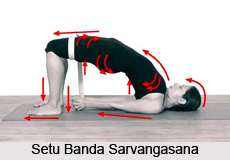 In order to function optimally and heal and prevent disorder and disease, the lungs and other respiratory organs require an adequate supply of fresh, healthy blood. In the Yoga Asanas this is essentially obtained in two ways, namely by way of gravity, i.e. inverted postures, and though the method of "squeezing and soaking". In inverted poses such as Sirsasana, Salamba Sarvangasana, Halasana, Setu Banda Sarvangasana and Virparita Karani, circulation throughout the body is radically altered and areas above the heart receive an increased supply of blood due to the effect of gravity. It should also be noted that the last two postures mentioned also have the additional respiratory benefit of stretching and massaging the diaphragm, the primary muscle of respiration. The process of "squeezing and soaking" occurs when a respiratory organ is constricted ("squeezed") during an Asana and then, upon coming out of the position, subsequently released, upon which the body "soaks" it with an excess of fresh, nutrient-rich blood.
In order to function optimally and heal and prevent disorder and disease, the lungs and other respiratory organs require an adequate supply of fresh, healthy blood. In the Yoga Asanas this is essentially obtained in two ways, namely by way of gravity, i.e. inverted postures, and though the method of "squeezing and soaking". In inverted poses such as Sirsasana, Salamba Sarvangasana, Halasana, Setu Banda Sarvangasana and Virparita Karani, circulation throughout the body is radically altered and areas above the heart receive an increased supply of blood due to the effect of gravity. It should also be noted that the last two postures mentioned also have the additional respiratory benefit of stretching and massaging the diaphragm, the primary muscle of respiration. The process of "squeezing and soaking" occurs when a respiratory organ is constricted ("squeezed") during an Asana and then, upon coming out of the position, subsequently released, upon which the body "soaks" it with an excess of fresh, nutrient-rich blood.
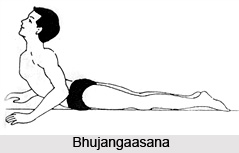 By meditation the sympathetic nervous system calms down. Yoga Asanas also cause one to take slower and deeper, and hence healthier breaths. There are a few specific groups of asanas, which are often recommended to directly and indirectly benefit the respiratory system. Backbends, some standing poses, and yoga asanas in which the arms are extended overhead stretch create space around the chest and abdominal areas, benefiting the lungs, diaphragm, and accessory muscles of respiration. Some postures that are particularly beneficial include Bhujangasana, Viparita Dandasana, Dwipada Viparta Dandasana, Urdhva Mukha Svanasana, Ustrasana, Supta Virasana, Urdhva Dhanurasana, Setu Bhanda Sarvangasana, Paryankasana, Virabhadrasana I and Utthita Trikonasana.
By meditation the sympathetic nervous system calms down. Yoga Asanas also cause one to take slower and deeper, and hence healthier breaths. There are a few specific groups of asanas, which are often recommended to directly and indirectly benefit the respiratory system. Backbends, some standing poses, and yoga asanas in which the arms are extended overhead stretch create space around the chest and abdominal areas, benefiting the lungs, diaphragm, and accessory muscles of respiration. Some postures that are particularly beneficial include Bhujangasana, Viparita Dandasana, Dwipada Viparta Dandasana, Urdhva Mukha Svanasana, Ustrasana, Supta Virasana, Urdhva Dhanurasana, Setu Bhanda Sarvangasana, Paryankasana, Virabhadrasana I and Utthita Trikonasana.
Since all of the systems of the body are closely related and much of the beneficial effect of the asanas comes from their holistic effect on the body as a unified organism, it is important to remember that concentrating on yoga asanas which directly benefit one system will also influence other bodily systems and the body as a whole.

